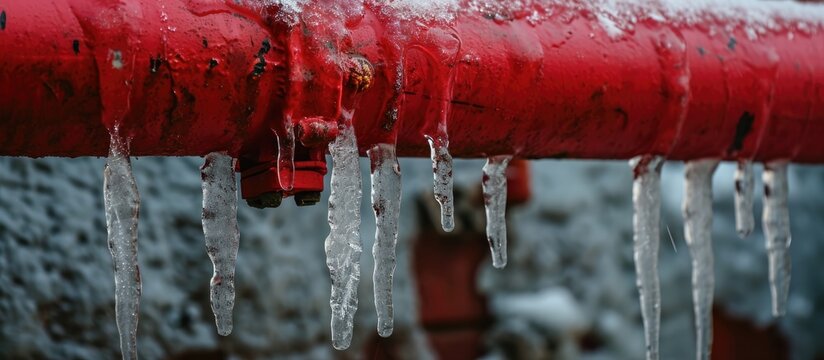Essential Tips to Prevent Frozen Pipes in Cold Weather
Essential Tips to Prevent Frozen Pipes in Cold Weather
Blog Article
Presented here below you'll find a lot of outstanding ideas about How to prepare your home plumbing for winter weather.

Winter can damage your plumbing, specifically by freezing pipelines. Right here's just how to prevent it from taking place and what to do if it does.
Intro
As temperatures decrease, the risk of frozen pipelines rises, possibly causing costly fixings and water damage. Recognizing how to stop frozen pipelines is essential for home owners in cool environments.
Avoidance Tips
Insulating prone pipes
Cover pipelines in insulation sleeves or utilize heat tape to secure them from freezing temperatures. Focus on pipelines in unheated or external areas of the home.
Home heating techniques
Keep indoor areas properly heated up, specifically locations with plumbing. Open up cabinet doors to enable warm air to flow around pipes under sinks.
Just how to recognize frozen pipelines
Search for decreased water flow from faucets, uncommon odors or sounds from pipes, and noticeable frost on exposed pipelines.
Long-Term Solutions
Architectural changes
Think about rerouting pipelines away from outside walls or unheated areas. Include added insulation to attics, cellars, and crawl spaces.
Upgrading insulation
Invest in top quality insulation for pipes, attics, and walls. Proper insulation aids preserve regular temperatures and reduces the risk of frozen pipelines.
Protecting Outdoor Pipes
Yard hose pipes and exterior taps
Detach and drain pipes yard pipes prior to winter months. Set up frost-proof faucets or cover exterior taps with insulated caps.
Recognizing Frozen Pipes
What causes pipelines to freeze?
Pipelines freeze when revealed to temperature levels below 32 ° F (0 ° C) for prolonged durations. As water inside the pipes freezes, it broadens, taxing the pipe walls and potentially causing them to break.
Dangers and damages
Frozen pipes can cause water disruptions, residential property damages, and costly repair work. Burst pipes can flooding homes and cause comprehensive structural damages.
Signs of Frozen Pipeline
Identifying frozen pipelines early can prevent them from breaking.
What to Do If Your Pipelines Freeze
Immediate actions to take
If you think frozen pipes, maintain faucets available to ease stress as the ice melts. Make use of a hairdryer or towels taken in warm water to thaw pipes slowly.
Final thought
Stopping frozen pipes requires aggressive procedures and quick reactions. By recognizing the reasons, signs, and preventive measures, property owners can safeguard their plumbing during cold weather.
5 Ways to Prevent Frozen Pipes
Drain Outdoor Faucets and Disconnect Hoses
First, close the shut-off valve that controls the flow of water in the pipe to your outdoor faucet. Then, head outside to disconnect and drain your hose and open the outdoor faucet to allow the water to completely drain out of the line. Turn off the faucet when done. Finally, head back to the shut-off valve and drain the remaining water inside the pipe into a bucket or container. Additionally, if you have a home irrigation system, you should consider hiring an expert to clear the system of water each year.
Insulate Pipes
One of the best and most cost-effective methods for preventing frozen water pipes is to wrap your pipes with insulation. This is especially important for areas in your home that aren’t exposed to heat, such as an attic. We suggest using foam sleeves, which can typically be found at your local hardware store.
Keep Heat Running at 65
Your pipes are located inside your walls, and the temperature there is much colder than the rest of the house. To prevent your pipes from freezing, The Insurance Information Institute suggests that you keep your home heated to at least 65 degrees, even when traveling. You may want to invest in smart devices that can keep an eye on the temperature in your home while you’re away.
Leave Water Dripping
Moving water — even a small trickle — can prevent ice from forming inside your pipes. When freezing temps are imminent, start a drip of water from all faucets that serve exposed pipes. Leaving a few faucets running will also help relieve pressure inside the pipes and help prevent a rupture if the water inside freezes.
Open Cupboard Doors
Warm your kitchen and bathroom pipes by opening cupboards and vanities. You should also leave your interior doors ajar to help warm air circulate evenly throughout your home.

I am just very enthusiastic about Preventing and dealing with frozen pipes and I really hope you liked the new page. Loved our blog entry? Please quickly share it. Let someone else locate it. I treasure your readership.
Get Started Report this page